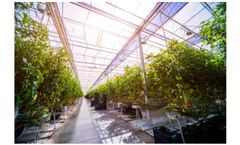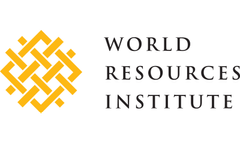Irrigation Strategy Articles & Analysis
19 articles found
Monitoring soil health is essential for farmers to make informed decisions about crop management practices, fertilizer application, and irrigation strategies. In recent years, advanced soil sensor systems have revolutionized the way we monitor and assess soil health parameters. ...
ByJXCT
Traditional irrigation methods, such as flooding and furrow irrigation, have given way to more sophisticated systems, including drip irrigation, sprinkler systems, and pivot irrigation. ...
In California and the northern hemisphere, nut fill has finished for most varieties of almonds, and hull split strategies are in place to get ready for harvest. Good hull split strategy is crucial for achieving a uniform hull split in each block, leading to more efficient shakes while avoiding navel orangeworm (NOW) and the costly spray programs required to ...
ByPhytech
Crop steering - an introduction. Crop steering is a fairly new term that’s increased in popularity recently, but some growers have been using crop steering techniques for many years. The phrase crop steering is most often used by cannabis growers in relation to commercial cultivation of medicinal cannabis plants, but is applicable to commercial cultivators across the board. After all, ...
All drivers for healthy plant growth, such as optimal LED spectrum and intensity, nutrient mix, irrigation strategy, climate settings are tested and validated daily in its Indoor Farming Research Lab in Beveren-Leie (Belgium). ...
Highly technical farmers like the Mullers will implement an irrigation strategy known as Regulated Deficit Irrigation (RDI) that optimally increases soluble solid content (also known as Brix) through the calculated manipulation of water application. ...
ByArable
Discussion of practical consequences related to irrigation volume and frequency, and the need to systematically relate irrigation strategies to the effects on plant water use and fruit ...
Discussion of practical consequences related to irrigation volume and frequency, and the need to systematically relate irrigation strategies to the effects on plant water use and fruit ...
As water scarcity worsens globally, there is growing interest in finding ways to reduce water consumption, and for reallocating water savings to other uses including environmental restoration. Because irrigated agriculture is responsible for more than 90% of all consumptive water use in water-scarce regions, much attention is being focused on opportunities to save water on ...
A study was carried out to assess the impact of climate change on yield and irrigation water requirement of these cereal crops in Bhaktapur, Nepal. ...
For instance, many people think of irrigation projects for agriculture as adaptation-relevant, yet climate change will have varying effects on agriculture outputs across the globe. ...
However, abstraction for irrigation accounts for 83% of the available water resources, competing with other uses. To conserve water resources and encourage demand management in the irrigation sector, a national water saving strategy was implemented. As part of the strategy, a number of reforms were introduced in the past few ...
On a global scale, irrigated agriculture consumes about 72% of available freshwater resources. Deficit irrigation can be applied in the field to save irrigation water and still lead to acceptable crop production. The AquaCrop model is a simulation model for management of irrigation and nitrogen fertilizer. This model is a new model that is accurate, robust and requires fewer data inputs ...
Nothing spells the death of a subsurface drip irrigation (SDI) system taster than root intrusion. With more growers placing drip irrigation lines below the soil surface, the need for a better understanding of how to keep roots out of drip emitters has also become more important. Work done at The ("enter for Irrigation Technology (GIT) over the ...
The paper then develops a framework that captures the analytics of irrigation demand management in terms of both the impact pathways of and the operational linkages between the options and their underlying institutions. Using this framework, the paper also outlines a strategy for irrigation demand management that can exploit the inherent ...
Turfgrass irrigation strategies must be clearly defined in response to increasing concerns over quality water availability. ...
One can halt the simulation at each time step, to study the effect of changes in water related inputs, making the model particularly suitable for developing deficit irrigation strategies and scenario ...
Given the current pressures to reduce irrigation water use, it is important to optimize the use of water in irrigated agriculture. This work was aimed at determining the optimum level of applied irrigation water (AIW) for cotton (Gossypium hirsutum L.) production in southern Spain under several climatic and agricultural policy scenarios. ...
Increasing pumping costs and declining well capacities in the Southern High Plains compel producers to seek irrigation strategies to maximize yield and water use efficiency (WUE), which is the ratio of yield to evapotranspiration (ET). ...











